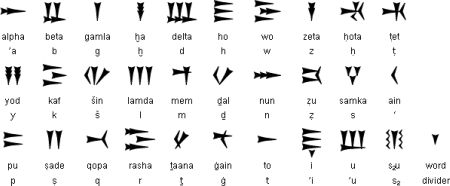
Posted on Thursday, July 22, 02010 by Adrienne Mamin
Egyptian Hieroglyphs on The Rosetta Stone were deciphered by scholars, but a new computer program written at MIT could potentially accomplish the same feat today:
“'Traditionally, decipherment has been viewed as a sort of scholarly detective game, and computers weren't thought to be of much use,’ study co-author and MIT computer science professor Regina Barzilay said in an email.” (quoted in this recent writeup in the National Geographic Daily News).
The language in this case is Ugaritic, written in cuneiform and last used in Syria more than three thousand years ago. Archaeologists discovered Ugaritic texts in 1928, but linguists didn’t finish deciphering them for another four years. The new computer program did it in a couple of hours.

While an exciting and significant first step, the program is not a silver bullet solution to language decipherment. Human beings figured out Ugaritic long before the computer program came along, and it remains to be seen how well the program works with a never-before-deciphered language. Furthermore, the program relied on comparisons between Ugaritic and a known and closely related language, Hebrew. There are some languages with no known close relatives, and in those cases, the computer program would be at a loss.
Of course, we can’t be certain exactly how the technology may progress in the future. But with the Rosetta Disk designed to last for thousands of years, and with hundreds of languages classified in the Ethnologue as nearly extinct, an automated decoder of language documentation seems likely to prove useful eventually. It’s nice to know we’ve made a promising start.